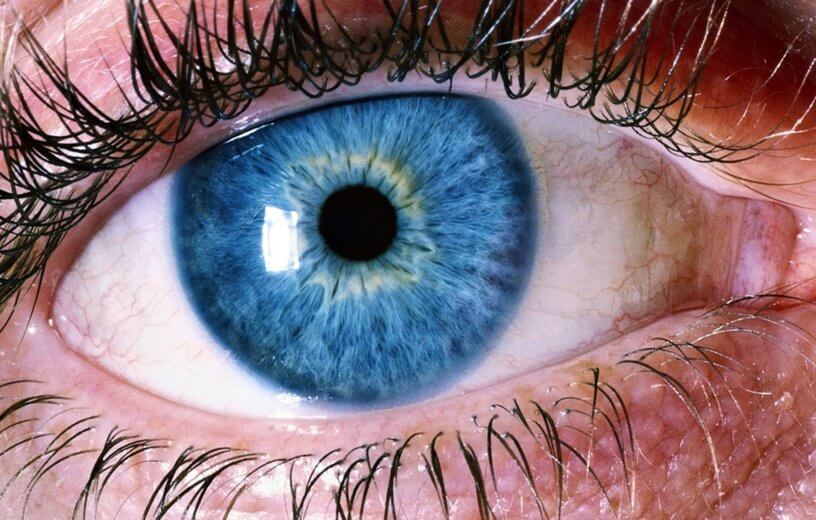OKLAHOMA CITY, Okla. — Losing your sight at any age is a terrifying thought. While disease tends to strike older adults, many causes of vision problems can occur throughout life, even right after birth. A new study has made a potentially groundbreaking discovery that may reverse vision loss in patients of all ages. Researchers in Oklahoma say they have found an “off switch” which relieves the blood vessel buildup around poor-functioning eyes.
“Potentially, even patients with advanced disease progression could see their fortunes turned around,” says study senior author Courtney Griffin, Ph.D. in a media release.
Scientists from the Oklahoma Medical Research Foundation (OMRF) say many eye disorders start with blood vessel growing out of control in the retina. This tissue lines the back of the eye, but when a cluster of blood vessels blocks light from reaching the retina we can’t see. The overgrowth (retinopathy) can cause vision problems which continue to get worse until a patient is totally blind.
Who suffers from retinopathy?
There are various forms and causes of retinopathy that affect different age groups. For premature babies, high oxygen levels in their hospital incubators can interrupt normal vessel development in the eye.
For people dealing with diabetes, diabetic retinopathy occurs when blood sugar levels are out of balance and cause new blood vessels to grow. These vessel don’t develop well and leak into the retina. In both cases, the damage can progress so far that it is irreversible.
The Centers for Disease Control and Prevention say at least 3.4 million people over age 40 in the United States are blind or visually impaired.
Certain protein may be key to healthy blood flow to eyes
Griffin and study co-author Chris Schafer used mice to study the development of blood vessels and these abnormal clusters. Schafer, a postdoctoral researcher, suspected there might be a clue hidden in the blood vessels which naturally fade and disappear soon after mice are born. The research found certain cellular proteins crash when young mice begin to experience normal blood flow to their eyes.
“Dr. Schafer hypothesized that these cellular proteins might be an important ‘off switch’ to eliminate these vessels in a neonatal model,” Griffin explains. “This is a new way of approaching these diseases. The current methods — invasive surgeries or life-long injections into the eye — only prevent the disease from advancing and often have serious complications.”
Schafer then identified an experimental compound that can shut down these proteins, flipping the switch on blood vessel growth.
“We wanted to trick blood vessels in diseased mice into thinking they were supposed to be regressing and naturally dying off,” Schafer adds. “This appears to be what happened.”
A step closer to curing vision loss?
Equally as important as reversing abnormal vessel growth, the scientists say this compound did not affect normal blood vessels needed by the eye. The Oklahoma team’s findings may lead to new vision therapies which target a patient’s specific eye disorder. OMRF researchers add this procedure may also help to shrink blood vessels found in tumors throughout the body.
“We’ve shown that once these abnormal vessels have formed in the young eye, they’re susceptible to being treated,” Griffin concludes. “More research is needed, but this could be a major advance in treatment for vision loss in patients of all ages.”
Study authors are now shifting their focus to studying the compound’s impact on adult eye diseases.
The findings appear in the Proceedings of the National Academy of Sciences.
Like studies? Follow us on Facebook!
